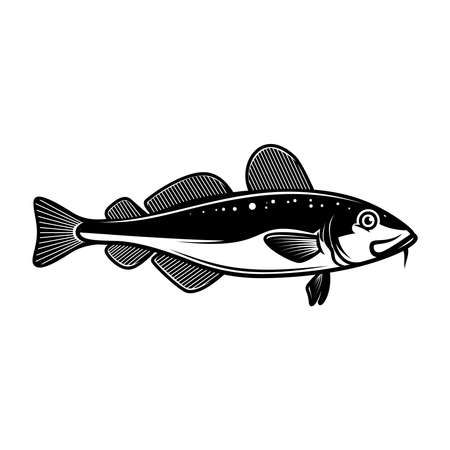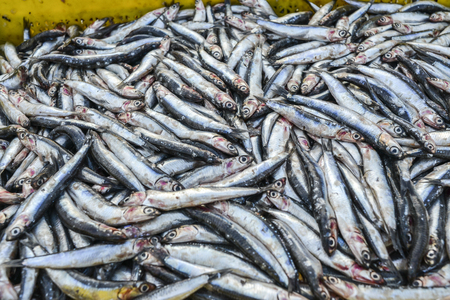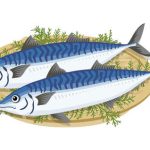Introduction to Marine Protected Areas (MPAs)
Marine Protected Areas, or MPAs, are specific regions of oceans, seas, and Great Lakes that are set aside by governments to protect natural and cultural resources. These areas help conserve marine ecosystems, restore fish populations, and support both recreational and commercial fishing in the long term. While they can vary in size and level of protection, all MPAs share a common goal: to balance the use of ocean resources with conservation efforts.
What Are MPAs?
MPAs are like national parks but underwater. They can include coral reefs, kelp forests, estuaries, and deep-sea habitats. In these zones, certain activities such as fishing, drilling, or boating might be restricted or regulated to prevent damage to marine life and habitats. The restrictions depend on the type of MPA and the goals for that area.
Purpose of MPAs
The main purposes of MPAs include:
- Protecting biodiversity and endangered species
- Rebuilding overfished stocks
- Preserving habitats critical for marine life
- Supporting sustainable fisheries
- Enhancing opportunities for recreation and tourism
Types of MPAs in the U.S.
In the United States, MPAs come in several forms with different levels of protection. Some completely ban fishing and other extractive activities, while others allow limited use under strict regulations. Here’s a quick comparison:
| Type of MPA | Level of Protection | Fishing Allowed? |
|---|---|---|
| No-Take Reserve | High | No |
| Marine Conservation Area | Moderate | Limited – some gear types allowed |
| Multiple-Use MPA | Low to Moderate | Yes – with restrictions |
How MPAs Are Established in the U.S.
The process of creating an MPA in the U.S. involves input from scientists, local communities, fishers, conservation groups, and government agencies. MPAs can be created at both federal and state levels:
Federal Jurisdiction
The federal government manages MPAs in offshore waters (from 3 to 200 nautical miles from shore) through agencies like NOAA (National Oceanic and Atmospheric Administration) and the Department of the Interior. Well-known federally managed MPAs include national marine sanctuaries like the Florida Keys National Marine Sanctuary.
State Jurisdiction
State governments oversee coastal waters up to 3 nautical miles from shore. Each state has its own process for designating MPAs based on local priorities. For example, California’s Marine Life Protection Act led to a statewide network of MPAs designed with stakeholder input from fishers, scientists, and community members.
A Collaborative Effort
The success of any MPA depends on cooperation between multiple stakeholders—government agencies, local communities, scientists, and especially those who rely on fishing for their livelihoods or recreation. Understanding how these protected areas work is key to making sure they serve both nature and people effectively.
Ecological Benefits and Conservation Goals
Marine Protected Areas (MPAs) play a major role in helping our oceans bounce back from years of overfishing and habitat damage. Whether youre a weekend angler or part of the commercial fishing industry, its important to understand how MPAs contribute to healthier marine ecosystems. These areas are not just about restrictions—theyre also about restoring balance and ensuring theres plenty of fish for future generations.
Preserving Habitat
Many marine species rely on specific habitats like coral reefs, kelp forests, or seagrass beds to breed, feed, and grow. When these areas are damaged by human activity or pollution, fish populations decline. MPAs help protect these vital underwater environments by limiting destructive practices like bottom trawling or anchoring on sensitive reefs. This allows marine life to flourish in their natural homes.
Boosting Biodiversity
Biodiversity means having a wide variety of marine species living in one area. Its a good sign of a healthy ocean. MPAs provide safe zones where all kinds of marine creatures—from small baitfish to large predators—can live without constant pressure from fishing. Over time, this can lead to a richer mix of species that benefit both the ecosystem and the people who rely on it.
Helping Fish Populations Recover
One of the biggest reasons MPAs were created is to help fish stocks recover, especially those that have been overfished. By giving certain areas a break from commercial and recreational fishing, fish have a chance to reproduce and grow in number. These “no-take” zones often serve as nurseries, where young fish can mature safely before spilling over into nearby waters where fishing is allowed.
Examples of Fish Species Benefiting from MPAs
| Species | Status Before MPA | Observed Recovery |
|---|---|---|
| Rockfish (West Coast) | Overfished | Population rebounding in protected zones |
| Gag Grouper (Florida) | Threatened | Increased spawning success |
| Scallops (Northeast Atlantic) | Declining harvests | Higher density inside MPAs leading to improved catches nearby |
What This Means for Anglers and Commercial Fishers
If youre out there casting lines or hauling nets, you might worry that MPAs limit your opportunities. But studies show that healthier fish populations inside MPAs often spill over into nearby fishing grounds. That means more consistent catches over time—not just now, but for years down the road. In other words, protecting some areas today can lead to better fishing tomorrow.

3. Impact on Recreational Fishing
Marine Protected Areas (MPAs) have a noticeable impact on recreational fishing across the United States. These zones, designed to conserve marine ecosystems, often come with specific rules that can change how and where local anglers are allowed to fish. While the long-term goal is to improve overall fish populations and ocean health, these protections can create both challenges and opportunities for recreational fishers.
Access Limitations
One of the biggest concerns for recreational anglers is limited access. Many MPAs restrict or completely ban fishing activities in certain areas, which may include popular fishing spots. This can be frustrating, especially for local anglers who have fished in those waters for generations. The chart below shows common types of access regulations within MPAs:
| Type of MPA | Fishing Access | Description |
|---|---|---|
| No-Take Zones | Prohibited | No fishing of any kind allowed. |
| Partial Protection Zones | Limited | Certain gear types or species restrictions apply. |
| Seasonal Closures | Restricted by Time | Fishing allowed only during specific months. |
| Multiple-Use Zones | Permitted with Rules | Recreational fishing allowed under specific guidelines. |
Effects on Local Anglers
For many coastal communities, fishing is more than just a hobby—its part of the culture and way of life. When MPAs limit access, it can feel like a loss of heritage. Some anglers worry they are being pushed out of their traditional fishing areas without enough input or consideration. However, others see MPAs as a way to ensure that future generations will still be able to enjoy healthy fisheries.
Short-Term vs Long-Term Impacts
In the short term, restrictions may cause inconvenience or reduced catch opportunities. But studies have shown that over time, well-managed MPAs can lead to larger fish populations that eventually “spill over” into nearby open areas. This means better catches just outside the protected zones.
| Timeframe | Common Impacts |
|---|---|
| Short-Term (1–3 years) | Less access, fewer catches, frustration among anglers |
| Long-Term (4+ years) | Bigger fish sizes, improved biodiversity, better catch rates nearby |
Enhancing the Recreational Experience
A surprising benefit of MPAs is how they can enhance the overall fishing experience in the long run. Healthier ecosystems mean cleaner waters, more visible marine life, and improved chances of landing a trophy fish. For some anglers, this makes trips more enjoyable and worth the wait.
Ultimately, while MPAs may require some adjustment from recreational fishers, many believe the trade-off leads to stronger fisheries and better experiences down the line.
4. Impact on Commercial Fishing
Marine Protected Areas (MPAs) can have a significant effect on commercial fishing operations across the United States. These impacts vary depending on the size, location, and regulations of each MPA. While some fishermen experience limitations, others may benefit from long-term ecological gains.
Restricted Access to Traditional Fishing Grounds
One of the most immediate changes that commercial fishers face is reduced access to areas they have historically relied on. When an area becomes protected, fishing activities may be limited or entirely banned within its boundaries. This can be especially difficult for small-scale operators who depend on nearby waters for their livelihood.
Common Restrictions in MPAs
| Type of Restriction | Description |
|---|---|
| No-Take Zones | All forms of extraction, including commercial fishing, are prohibited. |
| Seasonal Closures | Fishing is only allowed during certain times of the year to protect spawning seasons. |
| Gear Restrictions | Only specific types of gear are allowed to minimize habitat damage and bycatch. |
Changes in Catch Volume
The short-term impact of MPAs often includes a drop in catch volume due to limited access. However, over time, many studies have shown that fish populations within MPAs grow larger and spill over into adjacent fishing areas. This spillover effect can eventually lead to increased catches just outside the protected zones.
Short-Term vs Long-Term Effects
| Time Frame | Effect on Catch Volume |
|---|---|
| Short-Term (0-2 years) | Decrease due to restricted access and adjustment period. |
| Medium-Term (3-5 years) | Stabilization as fish stocks begin to recover near boundaries. |
| Long-Term (5+ years) | Potential increase due to spillover from healthy fish populations inside MPAs. |
Economic Trade-Offs
The economic impact of MPAs on commercial fisheries is a balancing act. While there may be initial losses related to relocation and reduced catch, there can also be long-term economic benefits. Healthier ecosystems support more sustainable fisheries, which can lead to higher profits down the line. Additionally, some communities may diversify income through eco-tourism or research partnerships linked to MPAs.
Examples of Economic Trade-Offs:
- Loss: Increased fuel costs from traveling farther offshore.
- Gain: Higher market prices for sustainably caught fish.
- Diversification: Job opportunities in marine science and conservation efforts.
The overall influence of MPAs on commercial fishing depends heavily on how they’re managed and the level of involvement from local fishing communities. Collaborative planning and adaptive management strategies can help minimize disruptions while maximizing benefits for both the ocean and the industry.
5. Balancing Conservation and Fishing Interests
Marine Protected Areas (MPAs) have sparked ongoing discussions between conservationists and the fishing community. While MPAs aim to protect marine ecosystems and rebuild fish stocks, they can also limit access to key fishing areas, affecting both recreational anglers and commercial fishers. Finding a balance that supports both environmental goals and fishing livelihoods is crucial for long-term success.
Understanding Stakeholder Perspectives
Different groups bring unique perspectives to the table when it comes to MPAs:
| Stakeholder | Main Concerns | Desired Outcomes |
|---|---|---|
| Recreational Fishers | Loss of favorite fishing spots, unclear regulations | Access to fishing areas, science-based management |
| Commercial Fishers | Reduced catch zones, economic impact | Sustainable harvests, input in policy decisions |
| Conservation Groups | Biodiversity loss, overfishing risks | Habitat protection, recovery of species |
| Local Communities | Economic dependence on fisheries or tourism | Balanced resource use, stable income sources |
Policy Debates and Challenges
The debate around MPAs often centers on how much area should be protected and what activities should be allowed within those zones. Some argue that strict no-take zones are necessary to allow ecosystems to recover fully. Others advocate for more flexible policies that consider local economic needs. One challenge is the lack of uniform rules across states or federal waters, which can lead to confusion among fishers.
Common Policy Questions Include:
- How large should protected areas be?
- Should recreational fishing be treated differently than commercial fishing?
- What role should science and traditional knowledge play in shaping MPA rules?
- How can enforcement be fair and effective?
The Role of Co-Management Approaches
One promising way to bridge gaps between conservation and fishing interests is through co-management. This approach brings together government agencies, scientists, local communities, and fishers to jointly manage marine resources. By involving stakeholders in decision-making, co-management builds trust and increases compliance with regulations.
Benefits of Co-Management:
- Shared Responsibility: Everyone has a voice in managing resources.
- Local Knowledge: Fishers contribute real-world insights alongside scientific data.
- Flexibility: Rules can adapt based on regional needs and feedback.
- Stronger Buy-In: Stakeholders are more likely to follow rules they helped create.
Balancing conservation goals with the needs of the fishing community isnt easy—but its possible. Through open communication, inclusive policy design, and adaptive management strategies like co-management, its becoming more realistic to protect ocean ecosystems while supporting the people who depend on them.
6. Case Studies from U.S. Waters
Marine Protected Areas (MPAs) in the United States are designed to balance conservation goals with the needs of both recreational and commercial fishing communities. Let’s take a closer look at how specific MPAs, such as Monterey Bay in California and the Florida Keys National Marine Sanctuary, are impacting local fisheries and marine ecosystems.
Monterey Bay National Marine Sanctuary, California
Established in 1992, the Monterey Bay National Marine Sanctuary stretches along the central coast of California. This MPA protects a wide variety of marine life while still allowing regulated fishing activities. Over the years, fish populations like rockfish and lingcod have seen notable rebounds due to habitat protection measures. Recreational anglers often report more consistent catches, especially in areas adjacent to no-take zones where fish spillover occurs.
Effects on Fishing Activities
| Fishing Type | Impact |
|---|---|
| Recreational | Improved catch rates near protected zones; increased tourism-based fishing |
| Commercial | Some spatial limitations but long-term gains in fish stock health |
Benefits to Ecosystem
- Recovery of kelp forests due to reduced bottom trawling
- Increased biodiversity including sea otters and seabirds
- Sustainable fish populations benefiting nearby fisheries
Florida Keys National Marine Sanctuary
This sanctuary was established in 1990 and includes coral reefs, seagrass beds, and mangrove forests. The Florida Keys MPA enforces several no-take zones and seasonal closures to protect spawning grounds for species like grouper and snapper. These protections have led to better fish size and abundance in surrounding waters, which is great news for both charter boat operators and local commercial fishermen.
Effects on Fishing Activities
| Fishing Type | Impact |
|---|---|
| Recreational | Larger average fish size; boosted eco-tourism opportunities like catch-and-release trips |
| Commercial | Tighter regulations in some areas; increased fish availability in adjacent open zones |
Ecosystem Improvements
- Healthier coral reefs supporting gamefish populations
- Bigger spawning events for key commercial species
- Improved water quality from reduced anchor damage and pollution controls
What These Examples Tell Us
The experience from places like Monterey Bay and the Florida Keys shows that well-managed MPAs can lead to healthier oceans without shutting down fishing entirely. In fact, many local anglers and seafood businesses benefit over time through more stable stocks and improved marine habitats. These case studies help make the case that conservation and fishing can go hand-in-hand when done right.


